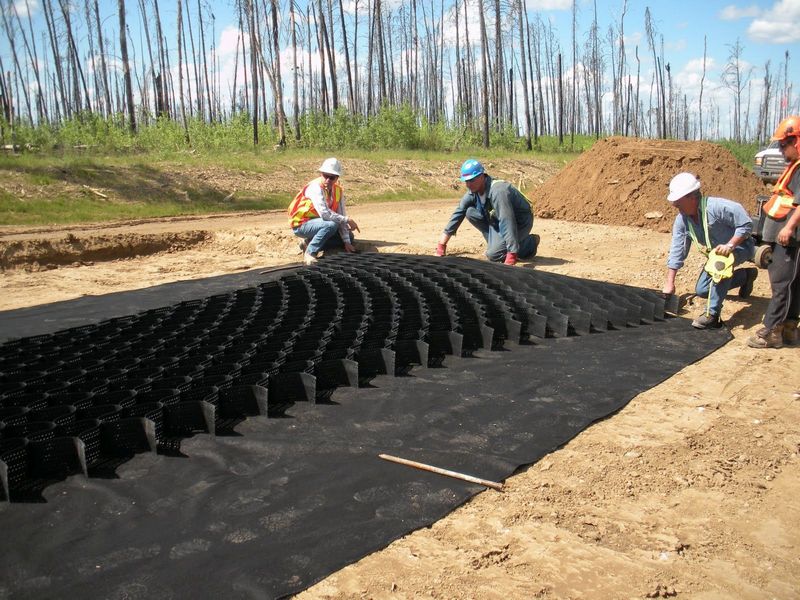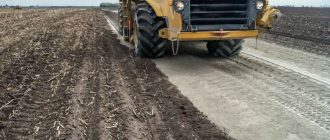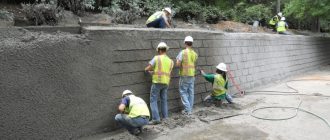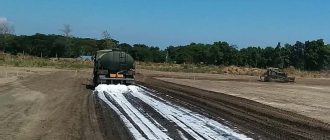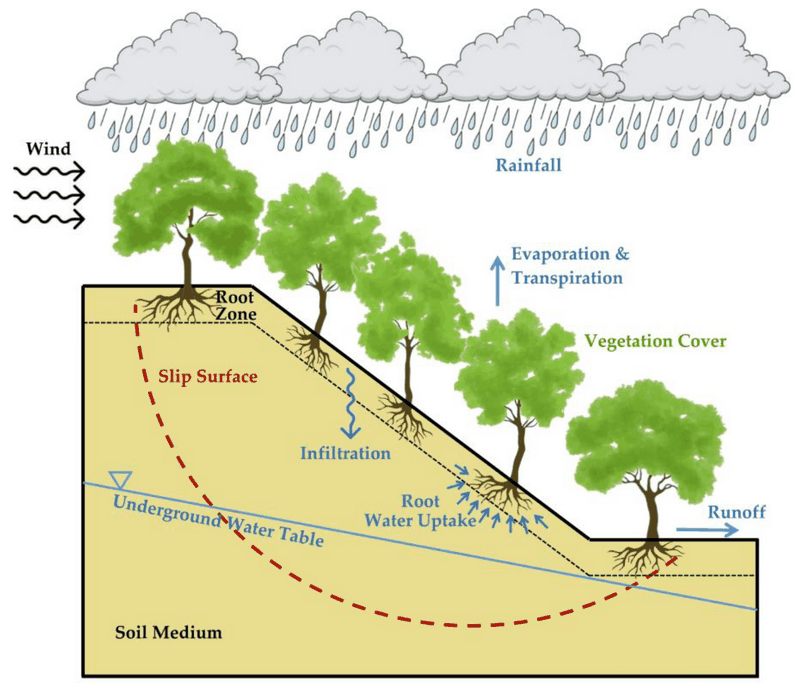
Environmental Impact of Soil Stabilization Techniques
Soil stabilization techniques have become increasingly important in the field of construction and engineering. These techniques aim to improve the properties of soil, making it more suitable for building structures or infrastructure. While soil stabilization can offer numerous benefits, it is important to consider its environmental impact.
Firstly, soil stabilization techniques can have a significant impact on the natural environment. Depending on the method used, these techniques can involve the use of chemical additives or mechanical processes that may disrupt the balance of soil ecosystems. Certain additives, such as cement or lime, can alter the pH levels of the soil, potentially affecting the growth of plants and the survival of microorganisms.
Additionally, soil stabilization techniques might also have indirect effects on the surrounding environment. Construction activities related to stabilization can lead to soil erosion and the release of sediment into nearby water bodies. This can harm aquatic ecosystems, affecting the health and survival of aquatic organisms. Furthermore, the use of heavy machinery and equipment in stabilization projects can contribute to noise pollution, disrupting both human and animal populations in the vicinity.
It is crucial to carefully evaluate the potential environmental impact of different soil stabilization techniques before implementing them. By considering alternative methods, using environmentally friendly additives, and employing proper sediment control measures, it is possible to minimize the negative effects and ensure that soil stabilization projects are carried out in an environmentally sustainable manner.
Soil Stabilization Techniques: A Guide for Understanding the Environmental Impact
Soil stabilization techniques refer to a range of methods used to improve the engineering properties of soil. These techniques are commonly employed in construction and infrastructure projects to enhance the stability, strength, and durability of the soil. However, it is important to understand that these techniques can also have an environmental impact.
The environmental impact of soil stabilization techniques can be both positive and negative. On one hand, these techniques can help prevent soil erosion, which is a major environmental concern. They can also reduce the need for excavation and the disposal of excess soil, thereby minimizing the disturbance to natural habitats and ecosystems.
On the other hand, soil stabilization techniques often involve the use of chemical additives or binders, such as lime, cement, or asphalt, which can have adverse effects on the environment. These additives can leach into the soil and contaminate groundwater, affecting local water sources and potentially harming aquatic life. In addition, the manufacturing and transportation of these additives can contribute to air pollution and greenhouse gas emissions.
To mitigate the negative environmental impact of soil stabilization techniques, it is essential to consider sustainable alternatives and best practices. For example, using organic additives like biochar or recycled materials can reduce the reliance on chemical binders and minimize pollution risks. Proper waste management and disposal methods should also be implemented to minimize the release of harmful substances into the environment.
- Choose environmentally friendly materials: Opt for eco-friendly additives and binders that have a minimal environmental impact.
- Implement erosion control measures: Proper erosion control techniques, such as the use of geotextiles or vegetative cover, can help prevent soil erosion and protect surrounding ecosystems.
- Monitor water quality: Regularly test water sources near soil stabilization sites to detect any contamination and take appropriate measures to prevent further pollution.
- Promote recycling and reuse: Encourage the reuse of stabilized soil or excess materials to reduce waste generation and limit the extraction of natural resources.
In conclusion, soil stabilization techniques can have both positive and negative environmental impacts. It is crucial to understand these impacts and take proactive measures to minimize any adverse effects. By choosing sustainable alternatives, implementing proper erosion control measures, and promoting recycling and reuse, we can ensure that soil stabilization techniques are carried out in an environmentally responsible manner.
Importance of Soil Stabilization
Soil stabilization techniques play a vital role in managing the impact of soil erosion and degradation. These techniques involve implementing various methods to improve the stability and strength of soil, making it less susceptible to erosion and other negative environmental effects. Soil stabilization is particularly important in construction and engineering projects, where the stability of the soil is crucial for the durability and safety of structures.
One of the key reasons why soil stabilization is important is its ability to prevent soil erosion. Erosion occurs when water or wind displaces the topsoil, leading to the loss of valuable nutrients and organic matter. By stabilizing the soil, erosion is minimized or even completely prevented, thus preserving the fertility of the soil and promoting healthy plant growth.
Furthermore, soil stabilization techniques can improve the load-bearing capacity of soil, reducing the risk of structural failures. By increasing the shear strength and cohesion of the soil, stabilization techniques enable the construction of stable foundations for buildings, roads, and other infrastructure. This not only ensures the safety and longevity of the structures but also minimizes the need for excessive maintenance and repair work.
In addition to preventing erosion and enhancing load-bearing capacity, soil stabilization techniques also contribute to environmental conservation. By stabilizing the soil, the use of aggregates and other external materials can be reduced, leading to a decrease in the demand for natural resources. This helps in minimizing the overall carbon footprint associated with construction projects and promotes sustainability.
Overall, the importance of soil stabilization cannot be overstated. By employing effective stabilization techniques, the negative environmental impacts caused by soil erosion and degradation can be significantly reduced. This, in turn, leads to improved soil quality, enhanced infrastructure durability, and a more sustainable approach to construction and land management.
Understanding Soil Stabilization Techniques
Soil stabilization techniques refer to various methods used to improve the engineering properties of soil. These techniques are commonly applied in construction, road building, and other civil engineering projects where the stability and strength of soil are crucial factors.
The environmental impact of soil stabilization techniques is an important consideration. While these techniques can provide numerous benefits, it is essential to understand their potential effects on the surrounding environment.
Some common soil stabilization techniques include:
1. Chemical Stabilization: This technique involves the addition of chemicals to the soil to enhance its properties. The chemicals can improve soil strength, reduce its susceptibility to erosion, and increase its resistance to water infiltration. However, the use of chemicals may have adverse effects on the surrounding ecosystem if not handled properly.
2. Mechanical Stabilization: This technique involves physical methods such as compaction and densification to improve soil stability. It can help increase the load-bearing capacity of soil and reduce settlement. However, excessive mechanical stabilization can disrupt the natural structure of soil and affect its permeability and water-holding capacity.
3. Biological Stabilization: This technique involves the use of plants and other biological materials to improve soil stability. Plant roots can bind soil particles together, preventing erosion and improving soil structure. Additionally, biological stabilization promotes biodiversity and enhances the overall health of the ecosystem.
When implementing soil stabilization techniques, it is crucial to consider the potential environmental impacts. Proper planning, site assessment, and monitoring can help mitigate any negative effects and ensure sustainable practices.
By understanding the environmental impact of soil stabilization techniques, engineers and stakeholders can make informed decisions and choose the most suitable techniques for their projects. Balancing engineering requirements with environmental considerations is vital in achieving long-term sustainability.
Environmental Considerations
When considering the environmental impact of soil stabilization techniques, it is important to evaluate their effects on the surrounding ecosystem. Soil stabilization techniques can have both positive and negative impacts on the environment, depending on various factors.
One of the primary environmental considerations is the use of chemicals in soil stabilization. Some stabilization techniques involve the use of chemicals such as polymers, cement, or lime to improve the stability and strength of the soil. These chemicals can potentially leach into the surrounding soil and water, posing a risk to both terrestrial and aquatic ecosystems. It is crucial to carefully consider the type and amount of chemicals used in order to minimize any negative impacts on the environment.
In addition to chemical use, the construction and implementation processes of soil stabilization techniques can also have environmental implications. Construction activities can lead to habitat disturbance, soil erosion, and the release of greenhouse gases. It is important to implement proper erosion control measures and to minimize disturbance to sensitive habitats during the stabilization process.
Furthermore, the long-term effects of soil stabilization techniques on the ecosystem should also be considered. While these techniques may provide immediate benefits such as improved soil stability and reduced erosion, they can also alter the natural composition and structure of the soil. This can impact the nutrient cycling, soil biodiversity, and overall ecosystem health. Regular monitoring and assessment of the stabilized areas is necessary to ensure any potential negative effects are identified and managed appropriately.
Overall, soil stabilization techniques should be evaluated and selected with careful consideration of their potential environmental impacts. By choosing techniques that minimize chemical use, mitigate construction impacts, and consider long-term ecological effects, we can ensure a sustainable approach to soil stabilization that is beneficial for both humans and the environment.
Erosion Control
Erosion control is an essential component of soil stabilization techniques, as it helps minimize the environmental impact of erosion on land and water resources. The process of erosion occurs when soil particles are detached and transported by water, wind, or gravity, leading to the loss of fertile topsoil and degradation of landscapes.
Various erosion control measures can be implemented to mitigate the negative effects of erosion. These techniques include the use of erosion control blankets, which are synthetic mats made of biodegradable materials that help stabilize the soil surface and reduce the velocity of water runoff. Additionally, vegetative cover, such as grass or shrubs, can be planted to create a protective layer that holds the soil in place and prevents erosion.
Another effective erosion control technique is the construction of terraces or retaining walls, which help reduce the slope of the land and prevent soil erosion. These structures provide a series of level platforms that slow down water runoff and allow it to infiltrate into the soil, reducing the likelihood of erosion.
Proper erosion control not only helps preserve soil fertility and prevent loss of valuable land, but it also protects water bodies from sediment pollution. Excessive sedimentation can harm aquatic ecosystems by reducing water quality, blocking sunlight, and choking aquatic species.
Overall, the implementation of erosion control measures is crucial in soil stabilization techniques to minimize the environmental impact of erosion and ensure the long-term sustainability of ecosystems and resources.
Reduction of Sediment Runoff
Soil stabilization techniques have a significant impact on reducing sediment runoff and controlling erosion. Sediment runoff occurs when soil particles are detached and carried away by water or wind, ultimately leading to sedimentation in water bodies or other sensitive environmental areas. This can result in the degradation of ecosystems, reduced water quality, and increased flooding risks.
By implementing soil stabilization techniques, such as erosion control blankets, vegetative covers, and chemical stabilization, the environmental impact of sediment runoff can be mitigated. Erosion control blankets provide a physical barrier that reduces the force of flowing water, allowing sediment particles to settle and preventing their transport. Vegetative covers, such as grass or shrubs, help to anchor the soil, reducing erosion and promoting the infiltration of water. Chemical stabilization involves the application of environmentally friendly chemicals to enhance soil particle bonding, improving its resistance to erosion.
| Erosion Control Blankets | – Reduces the force of flowing water – Prevents the transport of sediment particles – Allows sediment to settle |
| Vegetative Covers | – Anchors the soil – Reduces erosion – Promotes water infiltration |
| Chemical Stabilization | – Improves soil particle bonding – Enhances resistance to erosion |
Overall, the implementation of soil stabilization techniques plays a crucial role in minimizing the environmental impact of sediment runoff. By reducing erosion and controlling sediment transport, these techniques contribute to the preservation of ecosystems, improvement of water quality, and reduction of flooding risks.
Water Quality Improvements
Soil stabilization techniques play a crucial role in improving water quality and minimizing the environmental impact of various construction and development projects. These techniques help to reduce erosion and prevent the transport of sediment and pollutants into water bodies, such as rivers, lakes, and oceans.
One of the key environmental benefits of soil stabilization techniques is the prevention of sediment runoff. Sediment-laden water runoff can lead to the degradation of water quality, including increased turbidity, reduced oxygen levels, and harmful impacts on aquatic life. By stabilizing the soil, erosion is minimized, and the amount of sediment entering waterways is significantly reduced.
In addition to reducing sediment runoff, soil stabilization techniques also help to control the transport of pollutants. During construction activities, pollutants like fertilizers, pesticides, and chemicals can easily wash off the soil and enter nearby water bodies. These pollutants can have detrimental effects on aquatic ecosystems and human health. However, by employing stabilization methods such as soil erosion control blankets, sediment basins, and sediment fences, the transport of these pollutants can be effectively minimized.
By implementing soil stabilization techniques, water quality can be improved, ensuring that water bodies remain clean and healthy. This is crucial for maintaining biodiversity, supporting aquatic life, and providing a safe water supply for both humans and wildlife.
Minimizing Soil Disturbance
As the demand for soil stabilization techniques increases, it is important to consider the environmental impact of these methods. One key aspect to consider is the level of soil disturbance caused by these techniques.
Soil disturbance refers to any activity that disrupts the natural structure and composition of the soil. This can include techniques such as soil excavation, compaction, and chemical treatments. While these techniques may be necessary for stabilization, they can also have negative consequences for the environment.
Minimizing soil disturbance is crucial in order to reduce the impact on soil health and biodiversity. By minimizing the disruption to the soil structure, we can help maintain its natural processes and ensure its long-term productivity.
One approach to minimizing soil disturbance is through the use of non-invasive stabilization techniques. These can include methods such as bio-stabilization, which utilizes natural biological processes to strengthen the soil. This technique involves the use of plants and microorganisms to improve soil stability and reduce erosion.
Another method is the use of low-impact construction practices. These practices aim to minimize the amount of soil that needs to be disturbed during construction activities. For example, trenchless installation methods can be used to install underground utilities without the need for extensive excavation.
Additionally, proper planning and surveying can help identify areas of sensitive soil that should be avoided or protected during stabilization projects. By understanding the unique characteristics of the soil in a given area, engineers and contractors can develop strategies to minimize disturbance and preserve the soil’s integrity.
In conclusion, minimizing soil disturbance is essential when implementing soil stabilization techniques. By employing non-invasive stabilization methods, practicing low-impact construction practices, and conducting thorough planning and surveying, we can reduce the environmental impact and ensure the long-term health of the soil.
Preservation of Natural Habitat
Soil stabilization techniques have an environmental impact that extends beyond the immediate improvement of infrastructure and land use. One important consideration is the preservation of natural habitats in the surrounding areas.
These techniques, which aim to improve the stability and resilience of soil, can have unintended consequences on the flora and fauna that rely on the existing ecosystem. Construction activities associated with soil stabilization can lead to habitat destruction, displacement of wildlife, and fragmentation of ecosystems.
It is crucial to carefully assess and minimize the negative environmental impacts when implementing soil stabilization techniques. This can be achieved through proper planning and implementation strategies. For example, conducting thorough environmental assessments prior to construction can help identify sensitive habitats that need to be protected or mitigated.
Furthermore, measures such as creating buffer zones around protected areas and implementing erosion control measures can help preserve natural habitats and prevent sedimentation in surrounding water bodies. These actions are essential in order to maintain a balanced and healthy ecosystem.
With the use of sustainable practices and the proper implementation of soil stabilization techniques, it is possible to minimize the negative impact on natural habitats. By prioritizing the preservation of natural habitats, we can ensure the long-term viability and sustainability of the environment.
Frequently asked questions:
What is soil stabilization?
Soil stabilization refers to the techniques and processes used to improve the physical properties of soil, making it more suitable for construction or other purposes. It involves treating the soil to increase its strength, durability, and resistance to erosion.
What are the environmental impacts of soil stabilization techniques?
Soil stabilization techniques can have both positive and negative environmental impacts. On one hand, they can help reduce soil erosion and maintain the stability of slopes, which helps protect surrounding ecosystems. On the other hand, some techniques involve the use of chemical additives that can contaminate groundwater or have other adverse effects on the environment.
What are some commonly used soil stabilization techniques?
There are several commonly used soil stabilization techniques, including the addition of cement, lime, or fly ash to the soil to improve its strength and stability. Other techniques include the use of geogrids or geotextiles to reinforce the soil and the construction of retaining walls or slope stabilization structures.
How can soil stabilization techniques benefit construction projects?
Soil stabilization techniques can benefit construction projects by improving the load-bearing capacity of the soil, reducing settling and heaving, and preventing erosion and soil degradation. This can lead to cost savings by minimizing the need for extensive excavation or foundation reinforcement, and by extending the lifespan of infrastructure.
What are the alternatives to traditional soil stabilization techniques?
There are several alternative soil stabilization techniques that are considered more environmentally friendly than traditional methods. These include using bio-based materials such as biopolymers or bio-enzymes to improve soil properties, and employing sustainable practices such as erosion control measures and rainwater harvesting.
What is soil stabilization?
Soil stabilization refers to the process of improving the properties of soil in order to enhance its strength, durability and load-bearing capacity. Various techniques are used to stabilize soil, such as adding stabilizing agents or reinforcing materials.
What are the common stabilizing agents used in soil stabilization?
Common stabilizing agents used in soil stabilization include lime, cement, fly ash, and bitumen. These agents help to improve the properties of the soil and make it more suitable for construction purposes.

